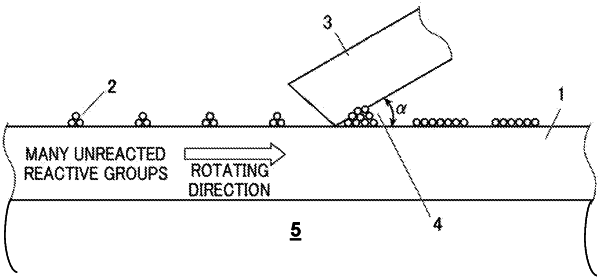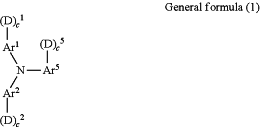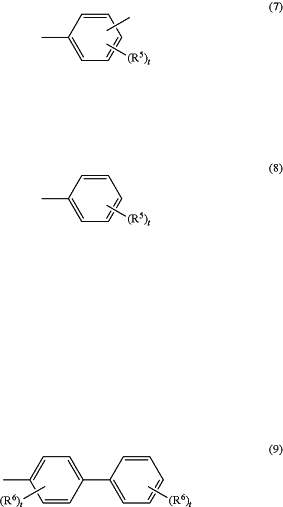| CPC G03G 15/6597 (2013.01) [G03G 5/06147 (2020.05); G03G 5/061473 (2020.05); G03G 5/0732 (2020.05); G03G 5/14786 (2013.01); G03G 5/14791 (2013.01); G03G 5/14795 (2013.01); G03G 8/00 (2013.01); G03G 15/751 (2013.01); G03G 21/0011 (2013.01); G03G 2215/00518 (2013.01)] | 8 Claims |

|
1. An electrophotographic image forming system that forms an electrostatic latent image on at least a photoreceptor, develops an image using an electrostatic charge image developing toner, and removes the electrostatic charge image developing toner using a cleaning blade, a tip ridge of the cleaning blade being pressed against a surface of the photoreceptor, the electrophotographic image forming system comprising:
a photoreceptor including a photosensitive layer,
a surface protecting layer that is provided on a surface of the photosensitive layer,
wherein the surface protecting layer includes a polymerizable monomer having at least two polymerizable groups in a molecule and a polymer of a hole transporting compound having a polymerizable group represented by General formula (1) below, and
the tip ridge of the cleaning blade has an edge angle that is obtuse and less than 120° and is pressed against the surface of the photoreceptor at an effective contact angle that is in a range of 8° to 20°
 in General formula (1), Ar1 and Ar2 each represent a linking group represented by a structural formula (7) below; Ar5 represents a group represented by a structural formula (8) or a structural formula (9) below; the total number of D that is a sum of c1, c2, and c5 is 1 or 2 when Ar5 is represented by the structural formula (8); the total number of D is 1 when Ar5 is represented by the structural formula (9); D is represented by —(—(CH2)d—(O—(CH2)f—)e—O—CO—C(CH3)═CH2) or —(—(CH2)d—(O—(CH2)f—)e—O—CO—CH═CH2); d and f each independently represent an integer of 0 to 5; e represents 0 or 1; and c1, c2, and c5 each independently represent 0, 1, or 2,
 in the structural formulas (7), (8), and (9), R5 and R6 each independently represent one selected from a group consisting of a hydrogen atom, an alkyl group containing 1 to 4 carbon atoms, a phenyl group substituted with an alkoxy group having 1 to 4 carbon atoms, an unsubstituted phenyl group, an aralkyl group having 7 to 10 carbon atoms, and a halogen atom; t represents an integer of 1 to 3; and two of R6 may be optionally bonded together so that the structural formula (9) forms a cyclic structure.
|